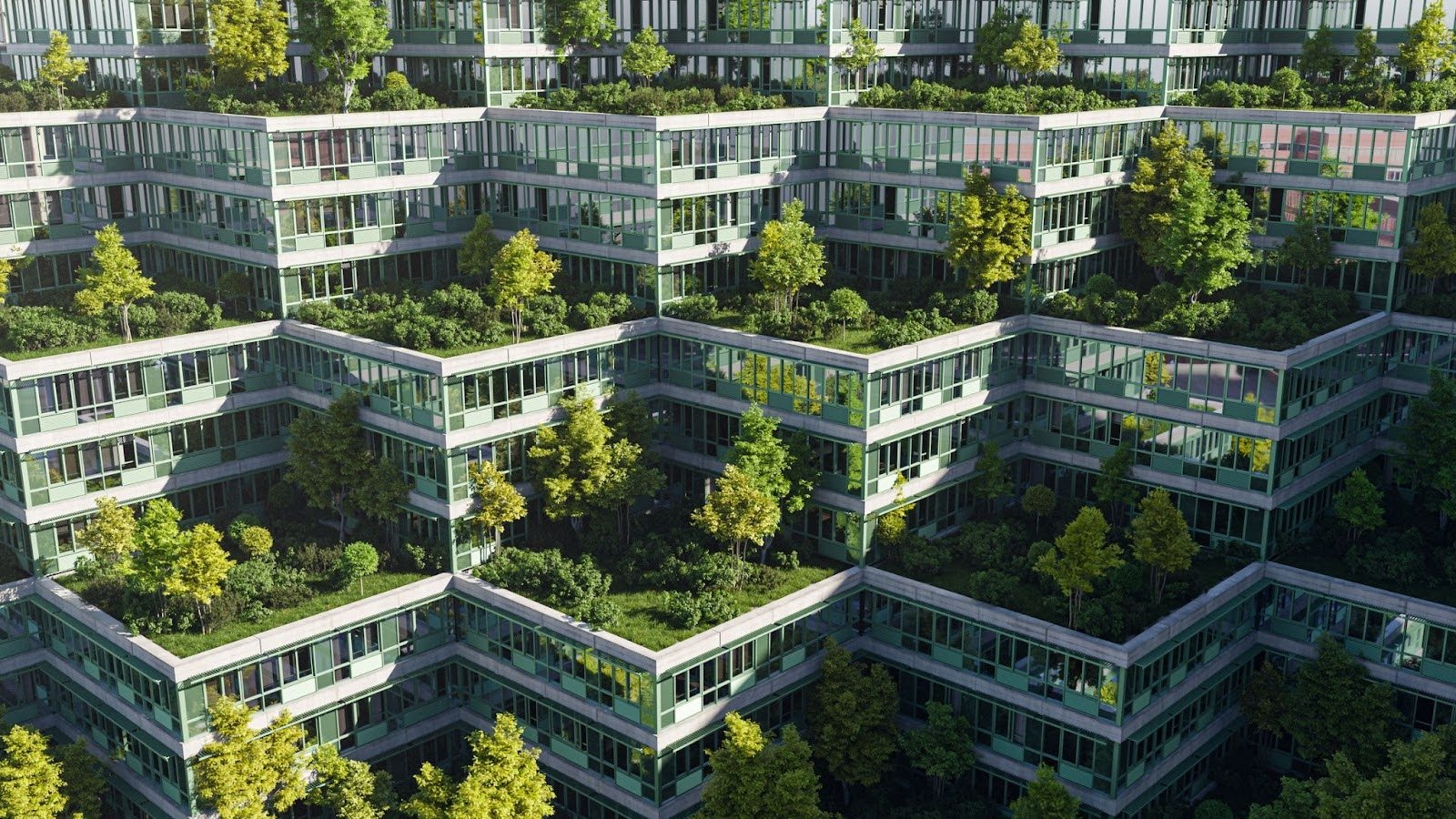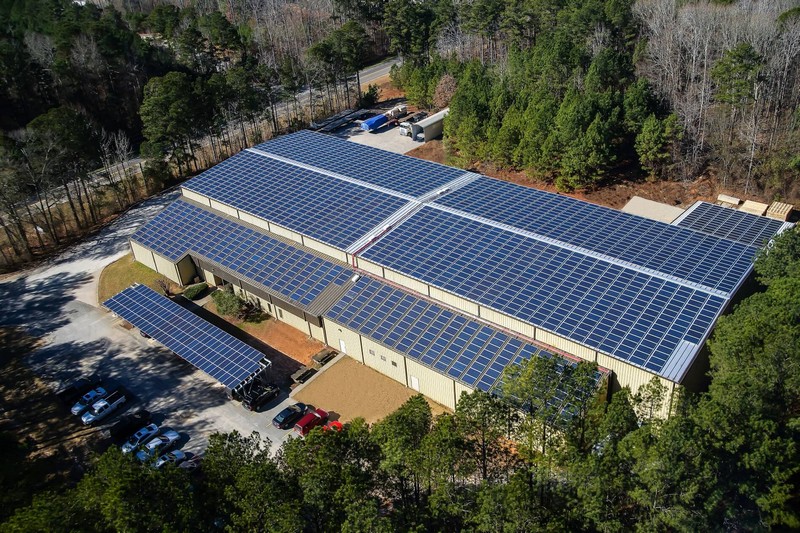Roof Replacement with the Planet in Mind: Environmental Concerns and Solutions
Regardless of how eco-aware you are, it’s very hard to ignore all the climate change information out there these days. Maybe you’ve already embraced change, driven an electric car, or have solar panels on your roof. Perhaps you’ve done none of those things.
Either way, a roof replacement project is a great way to make your home a little greener. Let’s take a closer look at how your new roof could be better for the environment.
The Environmental Impact of Different Kinds of Roofing
The first thing to consider when choosing an eco-friendly roof replacement material is the direct environmental impact of producing the material. So, of course, natural materials like slate, which aren’t manufactured, have very low ratings. In contrast, products like shingles, clay tiles, and metal roofing require mining, refining, and production, so they have a higher carbon footprint.
While it’s important to consider carbon footprint in your material selection, it’s also important to realize that it represents only one piece of the puzzle.
Considerations Beyond Carbon Footprint
Maintenance
While a product's carbon footprint during manufacturing is certainly important, it’s also critical to consider features such as life expectancy, durability, required maintenance, sustainability, and recyclability in your material selections.
Assuming they are properly installed, maintained, and in an appropriate climate, the lifespan, and maintenance expectations for various roofing products can be found in the table below:
| Material |
Life expectancy
|
Expected Maintenance
|
|---|---|---|
|
3-tab shingles
|
10 to 20 years
|
Medium
|
|
Architectural shingles
|
15 to 25 years
|
Medium
|
|
Cedar shakes/shingles
|
20 to 40 years
|
High
|
|
Slate
|
30 to 100
|
Low
|
|
Ribbed metal
|
30 to 40 years
|
Low
|
|
Standing seam
|
60 years or more
|
Low
|
|
Clay tile
|
50 to 100 years
|
High
|
|
Copper and zinc
|
100 years or longer
|
Low
|
Life Expectancy
When you consider the relatively short life expectancy, high carbon footprint, and maintenance, shingle options emerge as one of the least environmentally friendly roofing options.
Recyclability
When considering sustainability, it’s also important to consider whether the material can be easily recycled. Some roofing materials – like metal – boast a 100% recycling rate, while others either aren’t recycled at all or are recycled on a very limited basis. In some cases, the product composition simply doesn’t lend itself to recycling; in others, there simply aren’t widespread services available. Bottom line: While many other products claim recyclability, very few are recycled with the frequency of metal.
Better Quality Materials Last Longer
In the roofing world, better quality roofing materials usually (although not always) cost a little more than less durable options.
Unfortunately, some of the cheapest roofing materials – including various kinds of asphalt shingles – are also the least environmentally friendly and least durable.
So not only do these products use petroleum products as a big part of the manufacturing process, but they also tend to offer the shortest lifespan. When they do go to the landfill, they can leach chemicals into the ground and groundwater.
If you can afford to, always try to choose better quality, longer lasting, non-bitumen-based roofing products for your roof replacement project.
Green Roofing Options
As everyone becomes more environmentally friendly, building designers, architects, engineers, and green building specialists are also looking for new ways to make every element of the built environment greener and more eco-conscious.
This has added a few new options to your roof replacement shortlist.
Green Roofs
Green roofs represent a newer option. This type of roofing combines an engineered substructure with living elements in the form of plants. This could be anything from simple grass or turf to vegetable gardens or rooftop green spaces where people can enjoy nature, even in the middle of the city.

However, while green roofs produce oxygen, they also require a more robust substructure to support the soil and plants, which likely introduces a higher carbon footprint for the building itself. They also require frequent watering and maintenance or replacement, both of which carry environmental impacts. Consequently, a product can be eco-friendly in one respect and challenging to the environment in another.
Wooden Shake Products
Wood roofs, including cedar shingles and shakes, are often considered green roofs, depending on what kind of treatment is used on the roof. However, once you start adding paint, stain, and bitumen-based waterproofing products, life expectancy increases, but the green elements quickly disappear.
Solar Applications
Finally, there are solar roofs, and this might include anything from solar panels combined with a green roof to thin-film photovoltaic panels installed on a metal roof. These roofs incorporate solar panels to help power your home or building and offset your direct energy consumption.
If you’re considering a solar system, be sure to select a roofing material with a life expectancy of at least as long as the solar product. If you don’t do this, it’s quite likely you will find yourself removing a perfectly good solar system to replace the roof underneath it. Between its 50-60-year life expectancy and ability to install solar without penetrating the roofing system, metal roofing is an excellent host for solar applications. The argument for solar and metal panel combinations is so strong that we’ve installed solar on eight of our manufacturing facilities. Read more about our solar and our journey here.

Depending on your location, you can find many different types of incentives to help offset the cost of solar applications. Learn more about federal tax credits for solar applications here.
The Future of Roofing: Innovations Aimed at Reducing Environmental Impact
As we learn more about the human impact on the environment, you can expect to see even more attention paid to everything, including roofing.
You’ll likely see more green roofing systems become accessible and affordable, combined with better and more efficient HVAC designs and more integrated wind and solar power generation options.
You can also expect to see some products fade in popularity as we learn more about the chemicals used in their production and the ensuing health and environmental risks.
We may even begin to see environmentally focused homeowners move away from steep roof slopes such as 8:12 and 10:12 and toward lower slopes such as 3:12 to conserve resources during construction and energy costs for the life of their homes.
Given climate change concerns, it also seems like we can expect inert, long-lasting roofing materials like cement tile, slate, and metal roofing to increase in popularity, particularly as green building initiatives like LEED encourage people to buy locally and choose recycled and recyclable materials.
Lastly, when conditions allow, we anticipate continued momentum toward recover instead of remove-and-replace roofing approaches. As the name implies, a remove-and-replace approach involves tearing off the existing roof material and installing a new roof. In contrast, a recover approach implies that new roofing material is installed over the existing roof.
Recover applications save the cost, hassle, and disposal of the old material. Recover projects also reduce landfill pressure since the old roof stays on the roof instead of in the landfill. When conditions allow, recover is a great cost-effective and environmentally friendly approach. It is important to note that once a roof has active leaks, it’s generally wise to remove the old roof for diagnosis and repair of any deteriorated roof sheathing.
Checking In with Roofing Contractors
The last thing you need to consider when deciding which kind of eco-friendly roof you want for your roof replacement project is contractor selection.
Hire a contractor as close as possible to your property or job site so they have less travel to and from your home or building daily. Use our Find a Contractor tool to help locate local contractors near you!
Also, it’s important to ask contractors how they handle demolition and disposal of demo materials to understand what will happen to your old roofing. While you’re at it, ask them if they have an environmental management plan. Many contractors these days do, and this helps to ensure that they’re not just installing greener materials; they’re running their business more environmentally conscious.
Summary
When faced with a roof replacement, you’re given a golden opportunity to select recyclable and long-lasting environmentally friendly materials. Contact us if you’d like to discuss how metal panels can be a great option for you and the environment!
About McElroy Metal
Since 1963, McElroy Metal has served the construction industry with quality products and excellent customer service. The employee-owned components manufacturer is headquartered in Bossier City, La., and has 14 manufacturing facilities across the United States. Quality, service and performance have been the cornerstone of McElroy Metal’s business philosophy and have contributed to the success of the company through the years. As a preferred service provider, these values will continue to be at the forefront of McElroy Metal’s model along with a strong focus on the customer.



.png?width=767&name=Metal%20Roofing%20for%20Event%20Centers,%20Arenas%20%20&%20Sports%20Facilities%20(1).png)





Comments on this article:
Scroll down to the bottom to submit a comment and join the conversation. Need help or have a question? Please contact us. Looking for a distributor or contractor? Please click here to get started.